A weird thing happened a couple of years ago; I’d been on a solo bike tour in Western Australia, along off-road tracks through very beautiful and remote country.
I was alone – often for a couple of days at a time, just with the huge trees and the wonderful country down there. It was very restorative, a meditative time, and some days I’d only average a few kilometres each hour as I had to unpack my bike and lift it over fallen trees on the track. I’d had a knee replacement the year before, and I was slowly getting back from that. The year had seemed tough, and the slow pace at which the trees lived their lives was just the lesson I needed to learn.
I was at the beginnings of my return to shooting film, and I’d taken my Nettar 6×6 folder, and had the idea that I’d make one frame a day on my trip.
The process of using the camera was also very slow and meditative, and suited the slow process of riding my bike. When I got home I wanted to make a photo essay to share with bike riders who had also done the trip. I had my film processed and scanned – but somehow the images were not what I wanted.
It did not feel like being there.
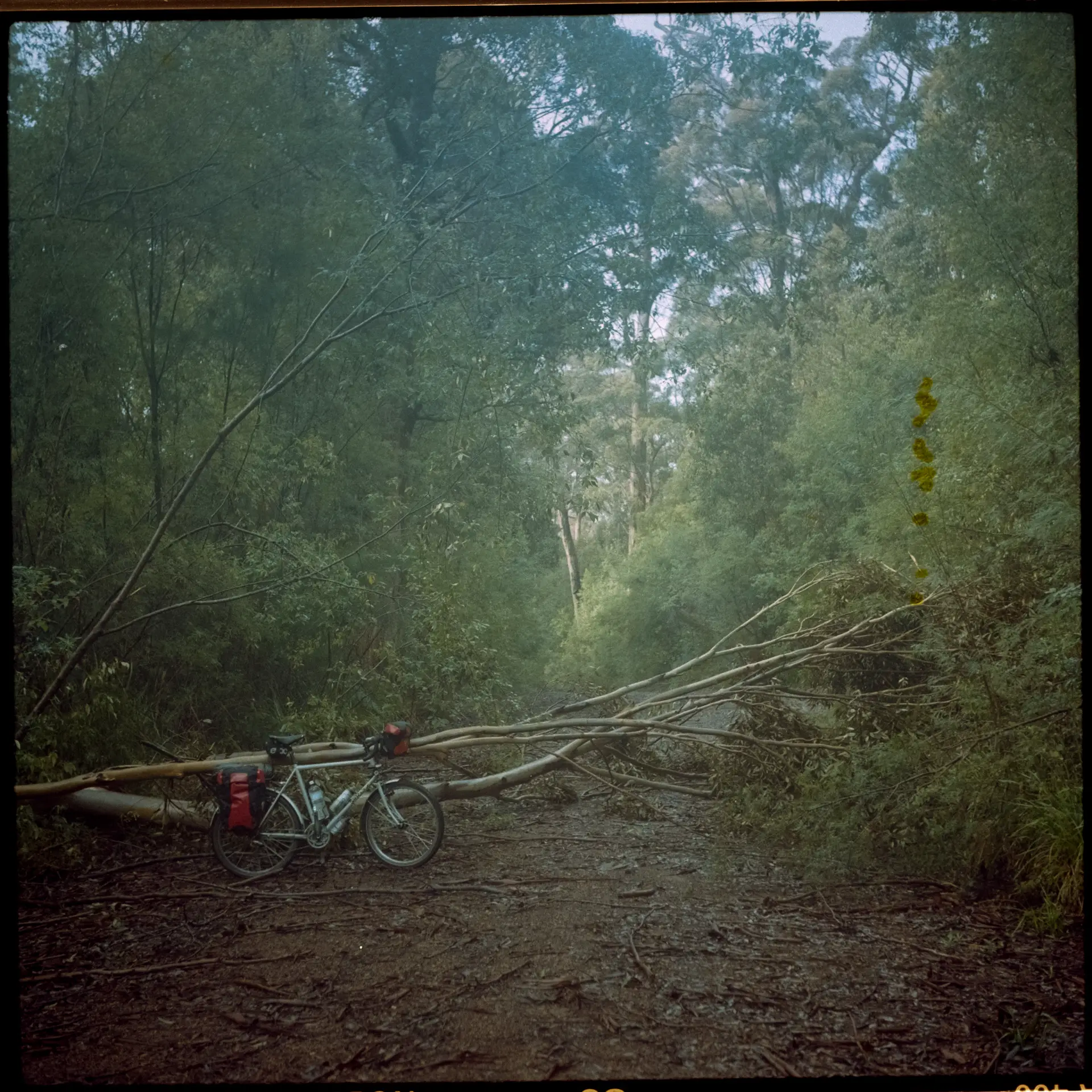
Thus began my adventures in inverting my own negs. The only way I had to do this was to shoot them on a lightbox with my DSLR. It was a shitty old flouro lightbox with one busted tube and uneven light, and I was starting from a skillset of zero.
I’d done black and white negs before, but inverting colour was tough – I spent ages on it. I had no idea what to do. Today I took that roll out and did it again. Now I have a nice Kaiser Plano LED lightbox, and a way better idea of what I’m doing. I did the whole roll – shooting and inverting – in about half an hour, with way better results than two years ago. I really don’t want to put more of the the bad ones up – I’m a bit embarrassed to even show them here, but if you want to see that original photo essay, in all its munted glory it’s here.
Back then it was a struggle – and frustrating because I could not really get what I wanted. But when I shared my little story with the fb group for riders of the trail, it went a bit nuts. My social media footprint is, shall we say, light. Normal audience – two people and a dog. This time my story got 1.5K views – unheard of before or since.
Something about those photos had connected with other bike riders. “Gosh – these are beautiful! It’s just like being there!” etc etc – Which is weird. There is SO much wrong with them that’s not even funny.
But the ones I did this morning, while still imperfect, are leaving me a bit cold. I felt I was just going through the motions when I inverted them. It was a bit like I’d become a machine following an algorithm. Just another bloody shop scan.
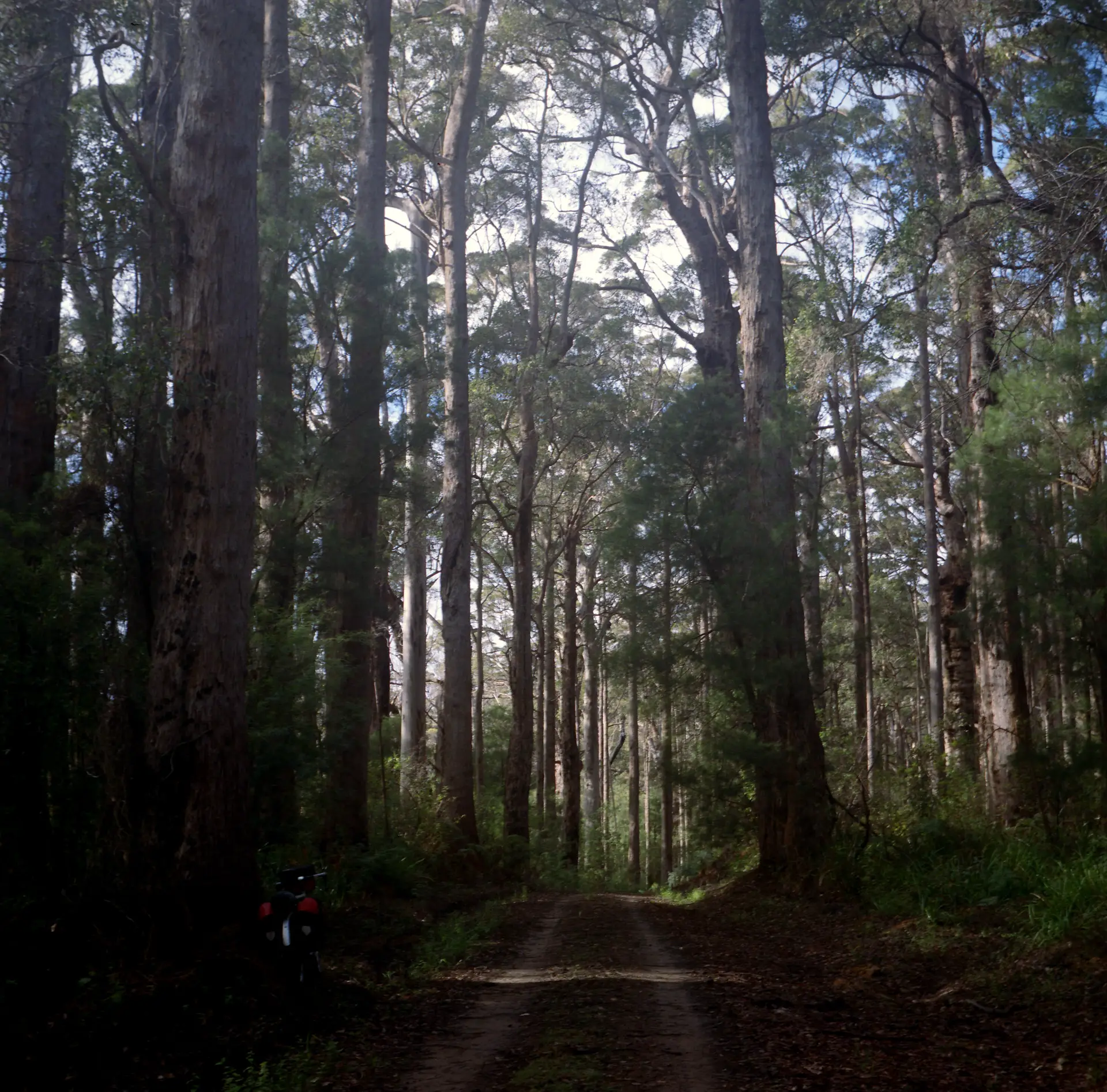
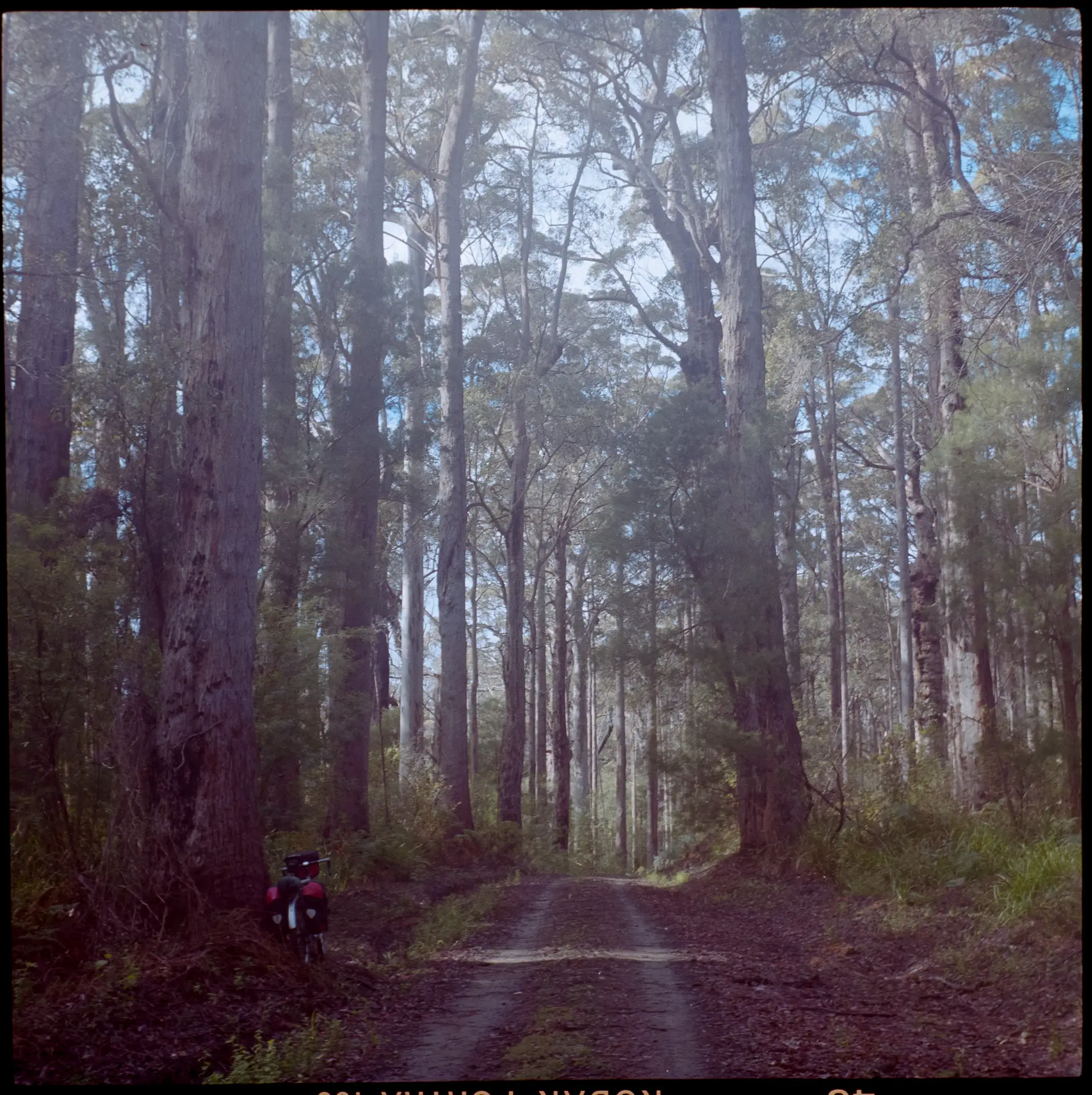
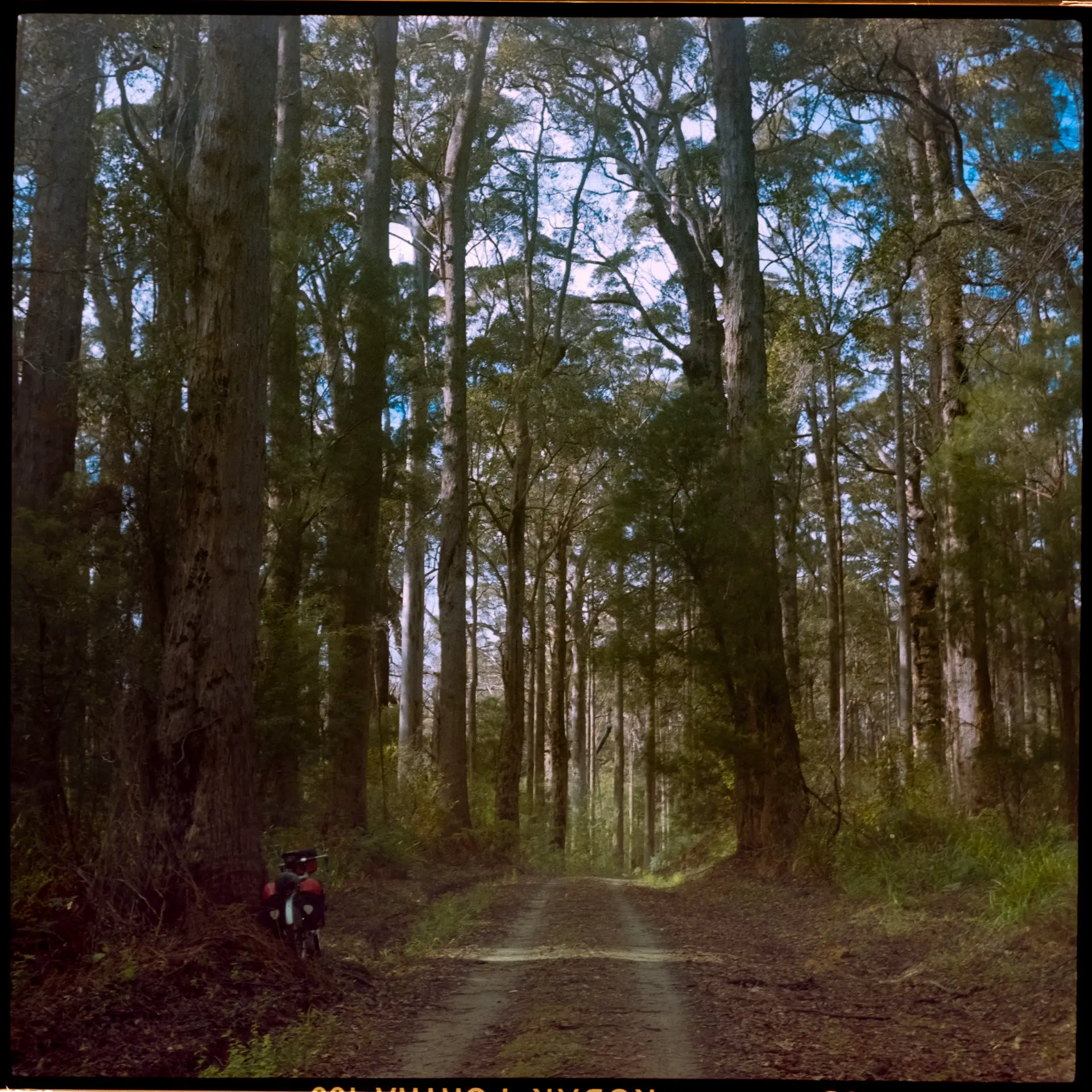
So how does this whole film/digitisation thing work for me? And would it work for you?
Let’s look at a shot that has some skin tones in it. Literally shot to finish the roll of 120 Portra 400 after I’d been shooting landscapes.
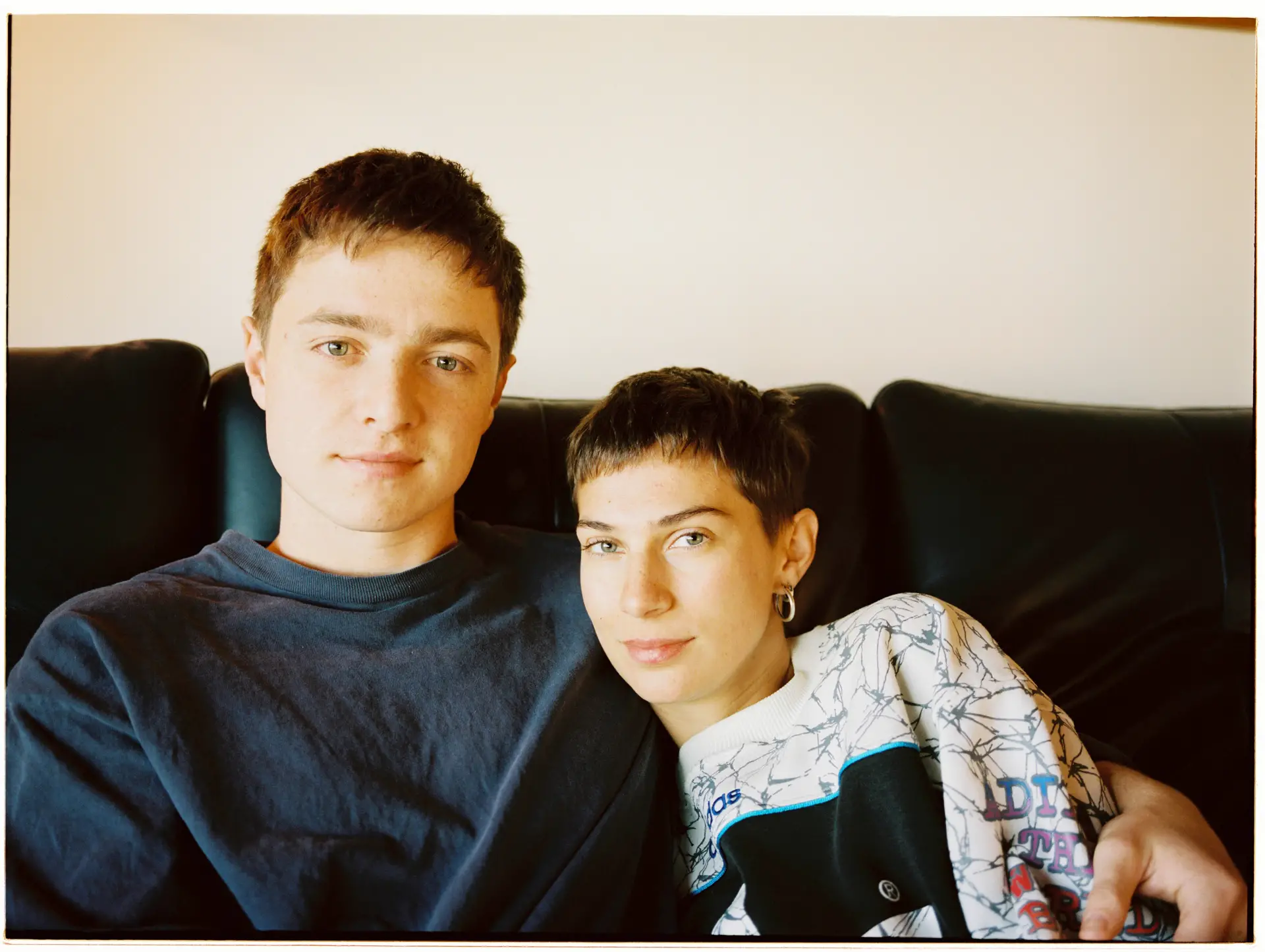
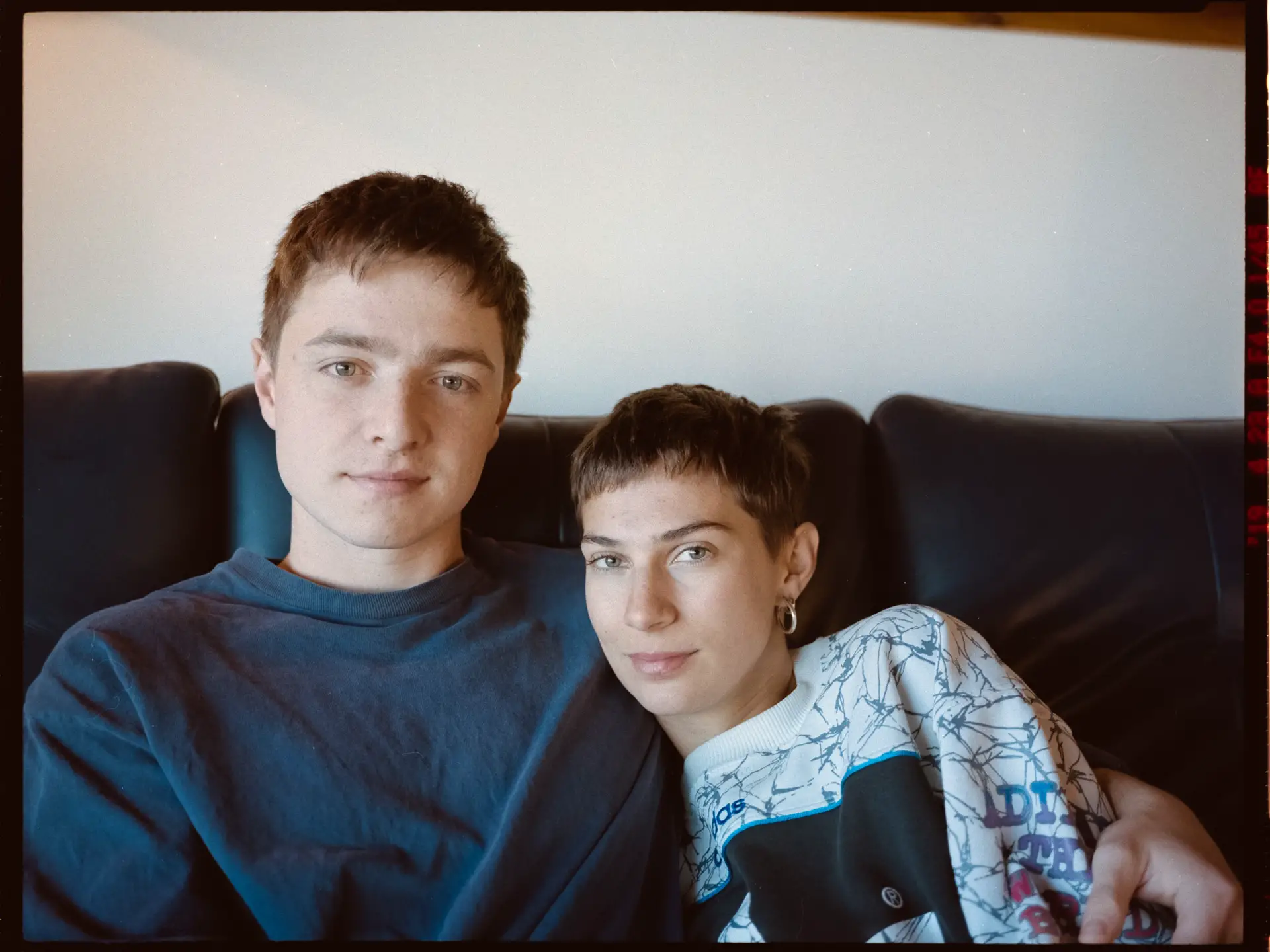
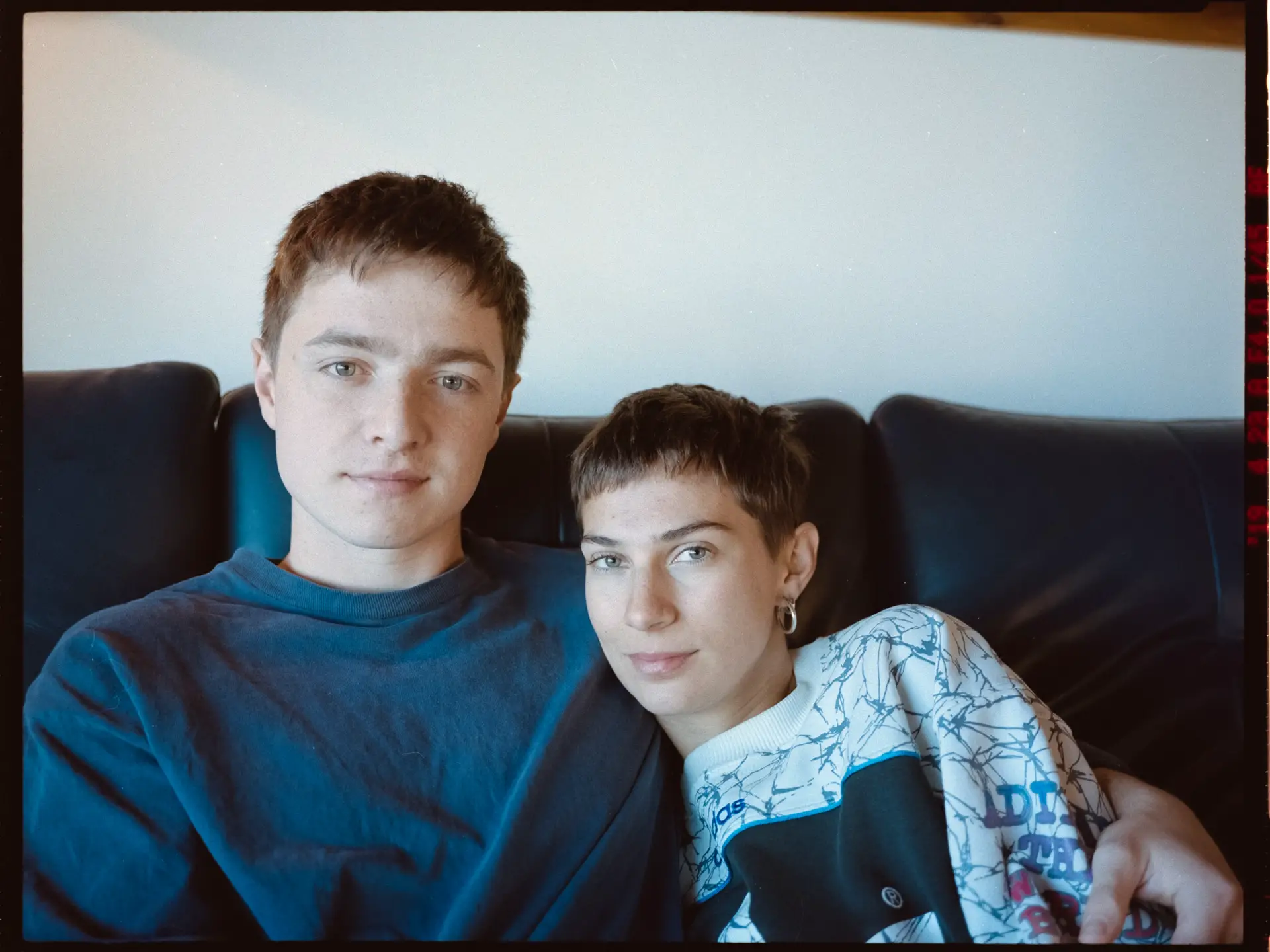
UPDATE AND CAVEAT: The very day that this article was added to the 35mmc queue, a new version of NLP was released. (v2.2) My conversion was done with the previous version. I thought of updating my article with v2.2 – but did not, for a couple of reasons. Mainly, if I gave any opinion on it I would be doing what I am trying to avoid – namely I’d be adding crap to the internet from someone who doesn’t know what they’re talking about. What I will say is this: I like (the previous version of) NLP, and for me it’s a kind of benchmark. It’s great as a comparative tool. I also like that you can look afterwards at the settings it has applied, and you can compare what NLP has done with what you’ve done yourself. There; that’s probably enough, so back to the article.
I made a little explainer video of my inverting process. I did this because it’s hard to explain but easy to show:
For this I used the shot of Issie and Joe because it has skin tones in it, and because I didn’t think the shop scan was very good.
Important Point: I’m not saying that you SHOULD digitise your film. But I do think if you CAN digitise it then you’ll know more about what you’re looking at when you see a scan, and you can then decide how you want to treat your films. There are two main things I’ve been shooting these past couple of years. One is Venice:
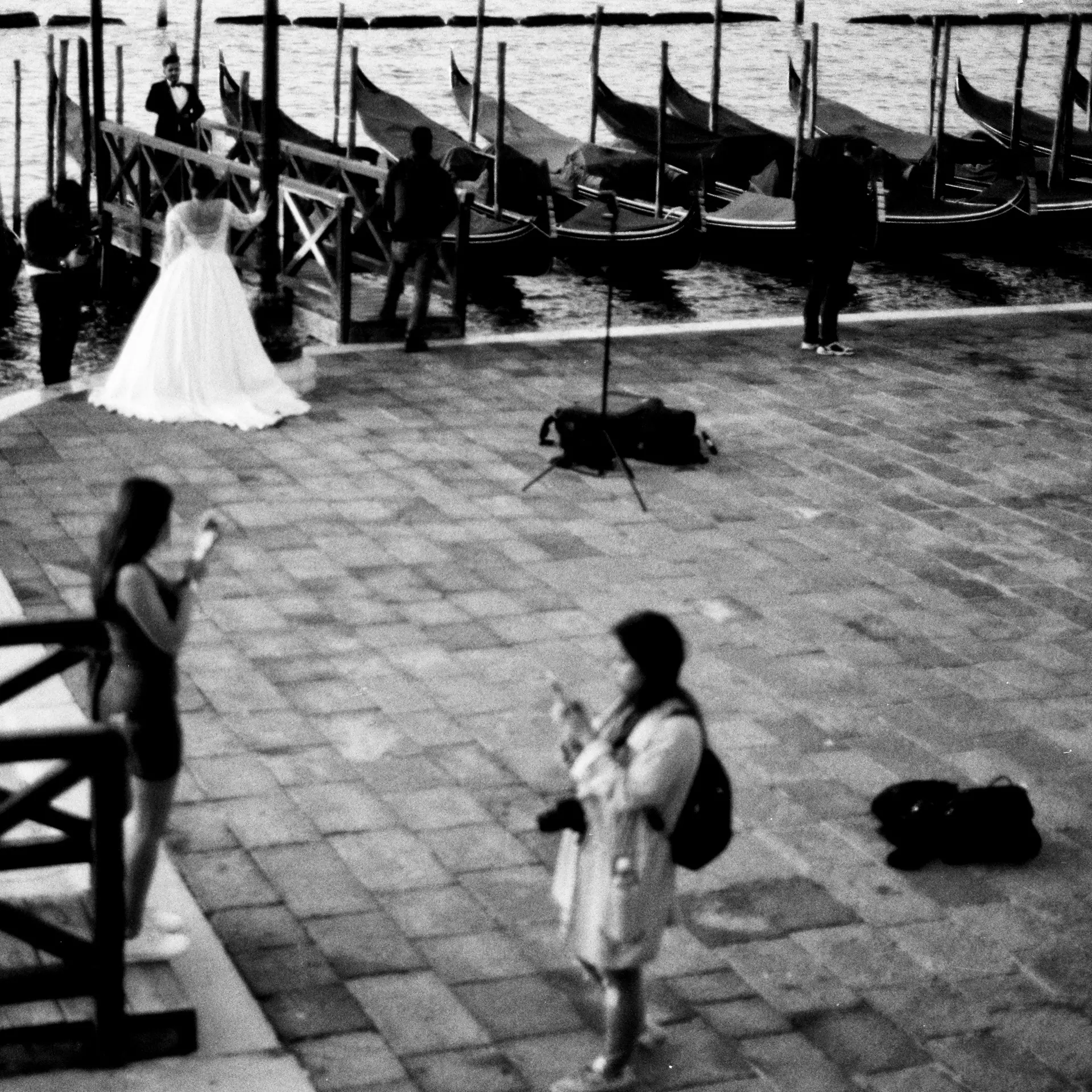
The Venice stuff I used for a piece here on inspiration. I’m hoping to use them for some kind of book, but that project stalled when I became sidetracked with landscapes. The shots – colour or black and white – are just shop scans of 35mm film. The lab scratched most of my B+W negs, the scans weren’t great, but I didn’t care. They are fine for my purpose. Just fine.
But I was more than happy to post-process the shit of these to get what I wanted – to get the mood I wanted. Was that wrong? Did I lose that “Portra Look”? Did I bastardise the HP5 shadow detail?
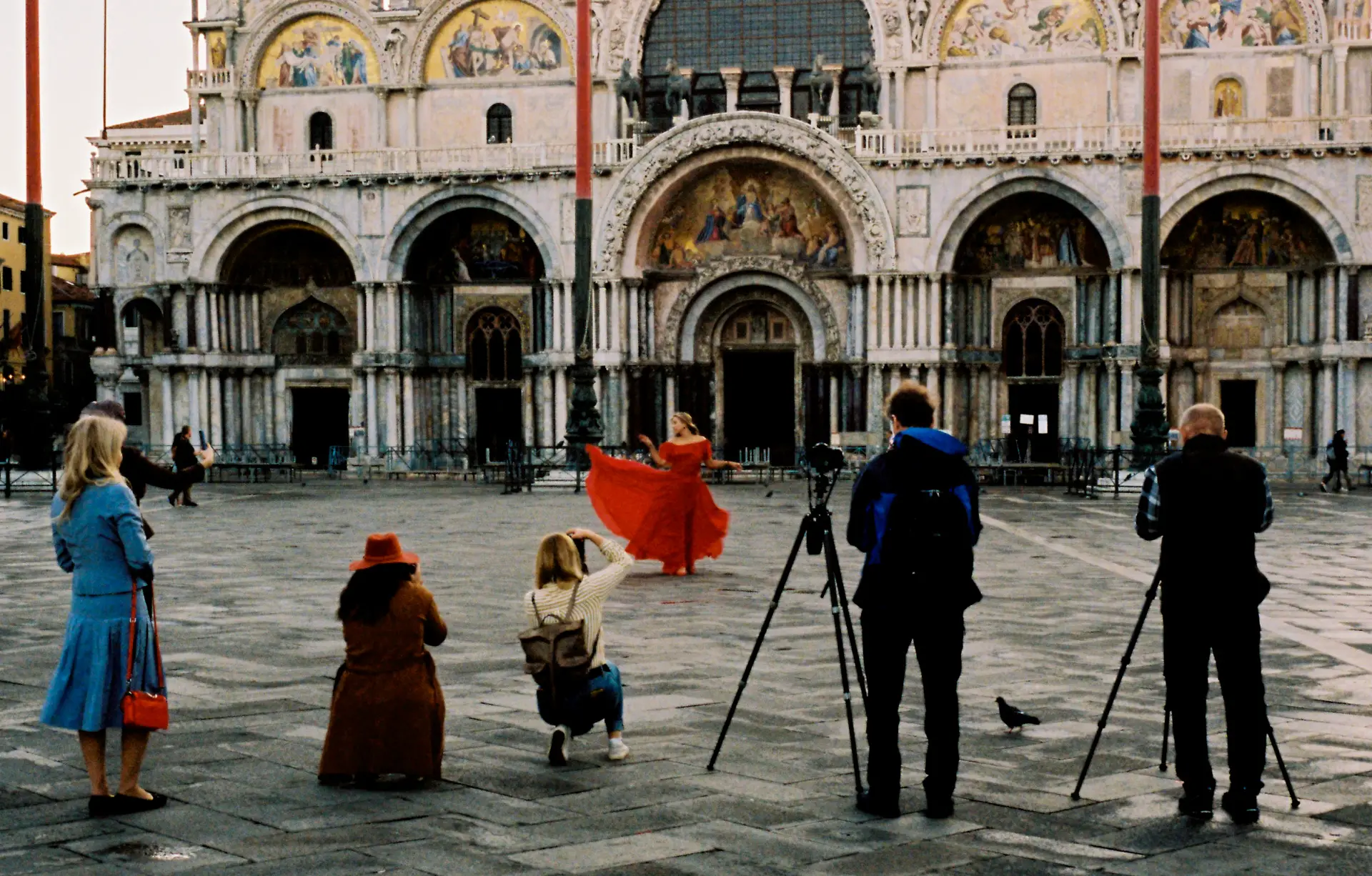
Let’s ask Ansel Adams what he thinks:
“The negative is comparable to the composer’s score and the print to its performance.”
Thanks uncle Ansel. There are a lot of Ansel Adams quotes I agree strongly with, even though I have never felt influenced by him or feel greatly attracted to his work.
What I think he means is that in a negative we have a certain amount of immutable information from which the final work is then created with the guidance of the artist.
There’s nothing pure or holy in the sanctity of the negative. I believe each is ours to do with as we please.
To help myself take ownership of the process, recently I opened one of my tiff scans up in a word processor to look at it. It was 14,000 pages of numbers. Just a bunch of numbers. It’s not a picture. A picture is what I make out of it.

There were times I would have argued with this. The first photo exhibition I had in 2009 I shot on digital and I presented the Lab with untouched OOC jpegs. No cropping, no post. Very Pure. Very Dogma. In my defence I’d say I hadn’t set out to do this, it just evolved while we were in Paris on holiday and it felt right not to touch them when I got home..
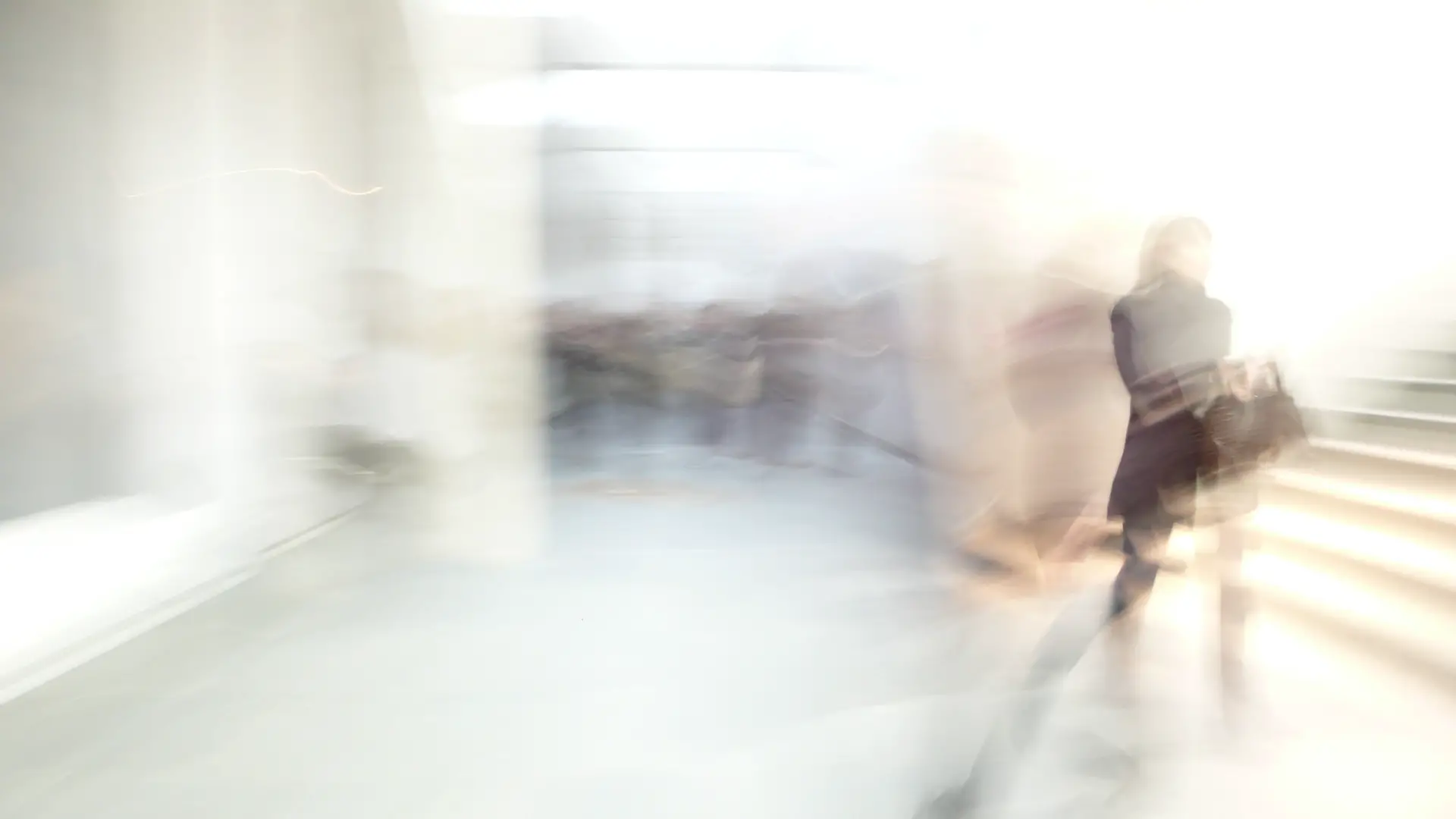
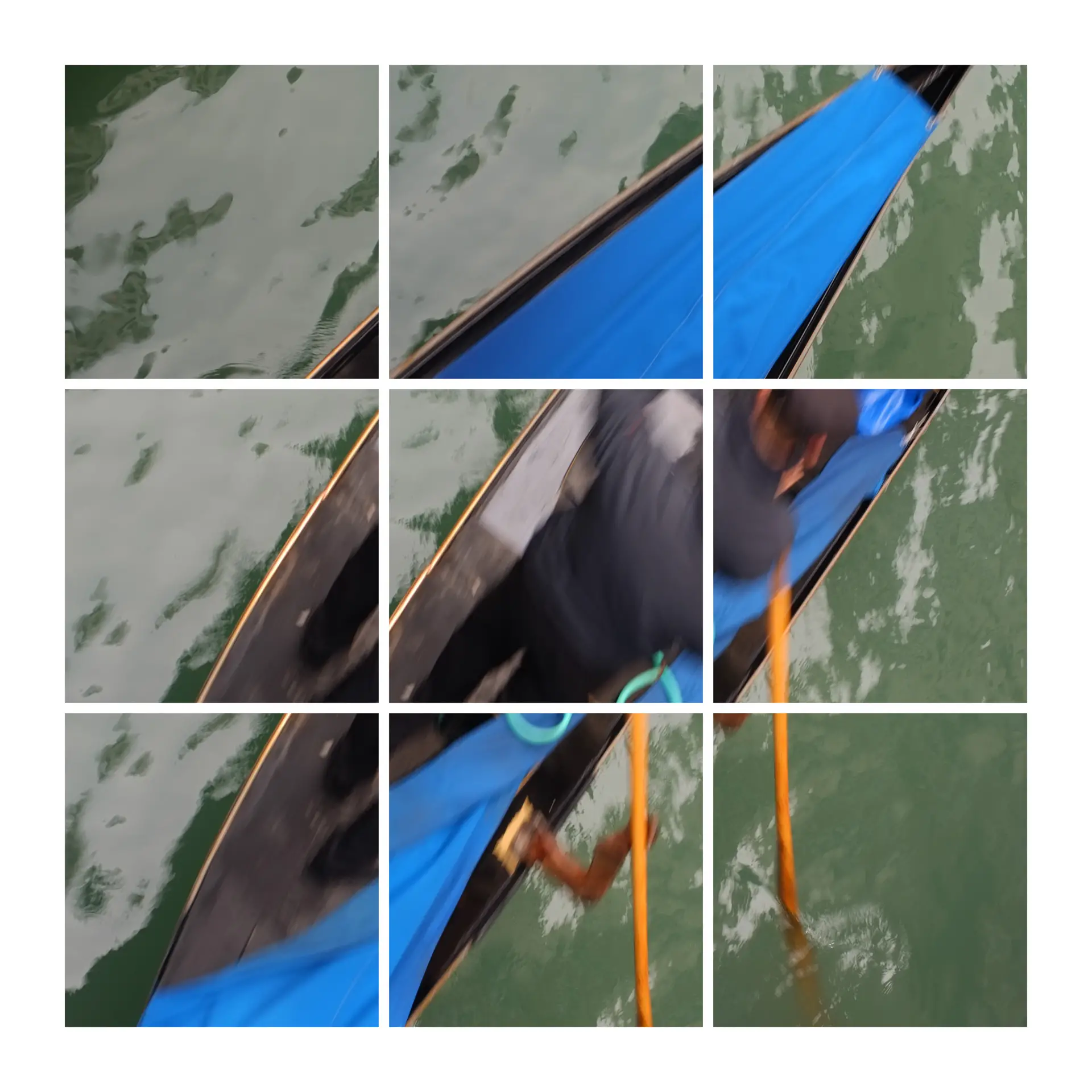
For the next photo show a couple of years later I’d gone all theory. you can see more here. I was trying to capture extended time in a photo. I remember very clearly talking to the printer about them. “How would you like me to print them?” He asked.
“Wow,” I thought. “I have a choice.” This was great – I had a guy who really knew his stuff, and I could instruct him. But how do you explain a mood to someone? I’d made a little video while I was there. “Here – watch this. This explains it.” I remember watching his face as we watched the video together. He just grinned and nodded, and that was the all the discussion we needed.
But I am a slow learner it seems: it looks like I keep changing my mind. Just under two years ago I shot a bunch of photos like this…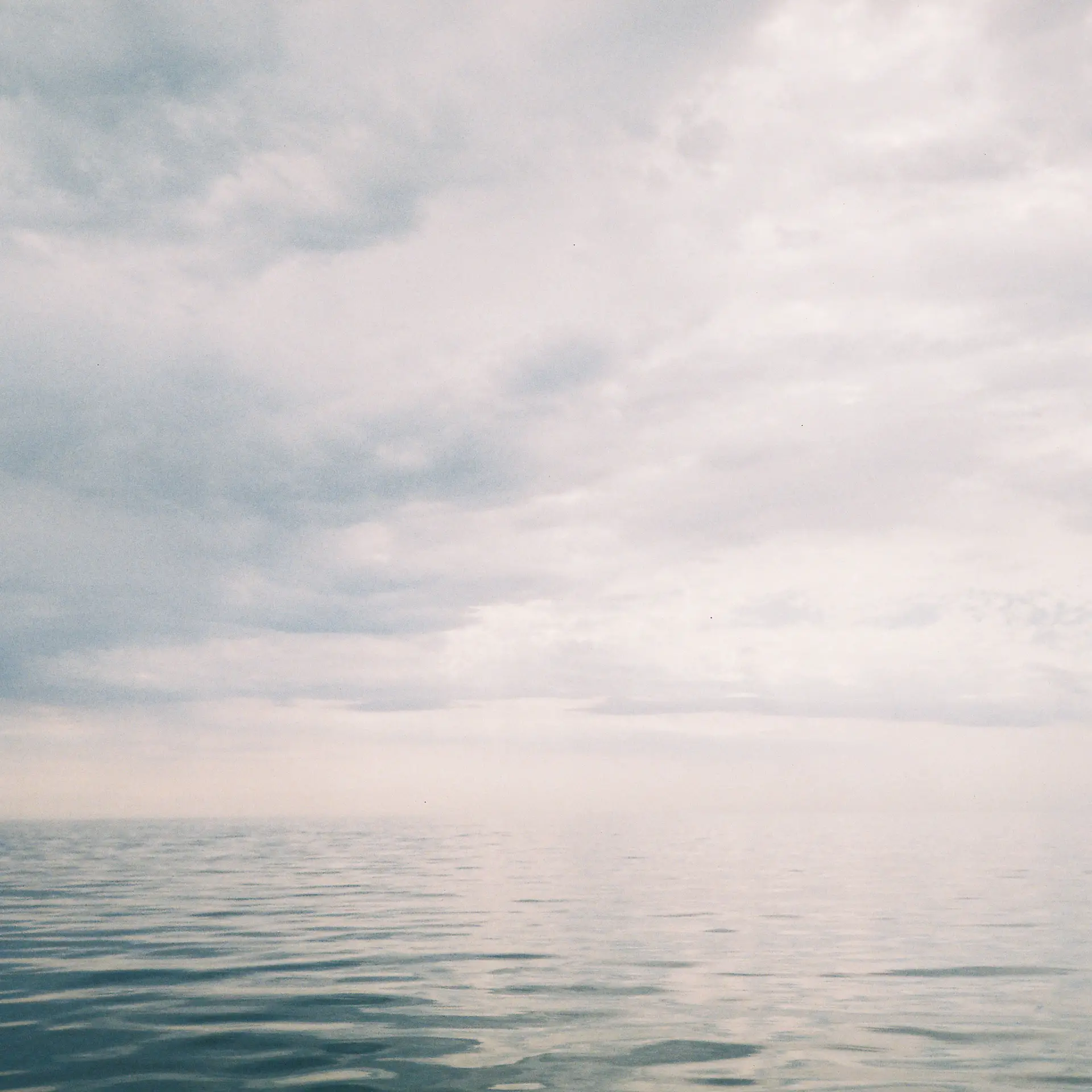
It was back to being all pure: I’d masked out my little point-and shoot so it made square frames on 35mm film. I didn’t touch the shop scans. No adjustments, no cropping, no nothing. Sent the files straight off to be printed CMYK el cheapo just as they were. Back to dogma. Yep – they went in to making a work I’ve just shown and I was happy with it and it taught me things, but hey, it could be time to move on.
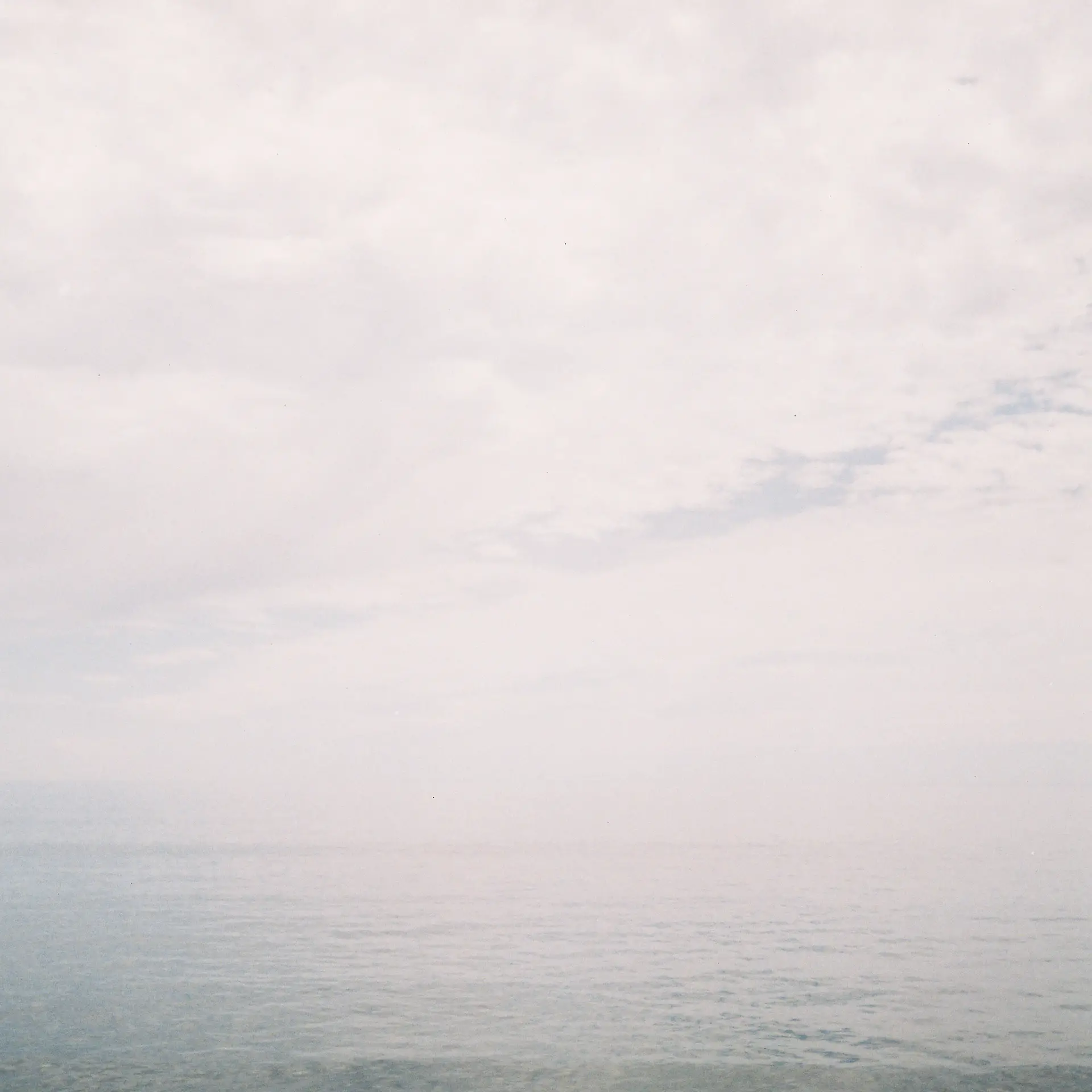
Despite my best intentions, while I was making these I came to realise that the process I used is in no way pure. It’s going through a series of algorithms to make the work. The algorithms in the Fuji Frontier scanner decide what the file will be, then there’s more work again in the printer software. Decisions and adjustments are being made all over the place – the decision I made was just to use the decisions that had already been made for me.
There is no purity about it; it’s just a case of whether the look of the final image is decided by me, or by someone else. My current thought is that it might as well be me.
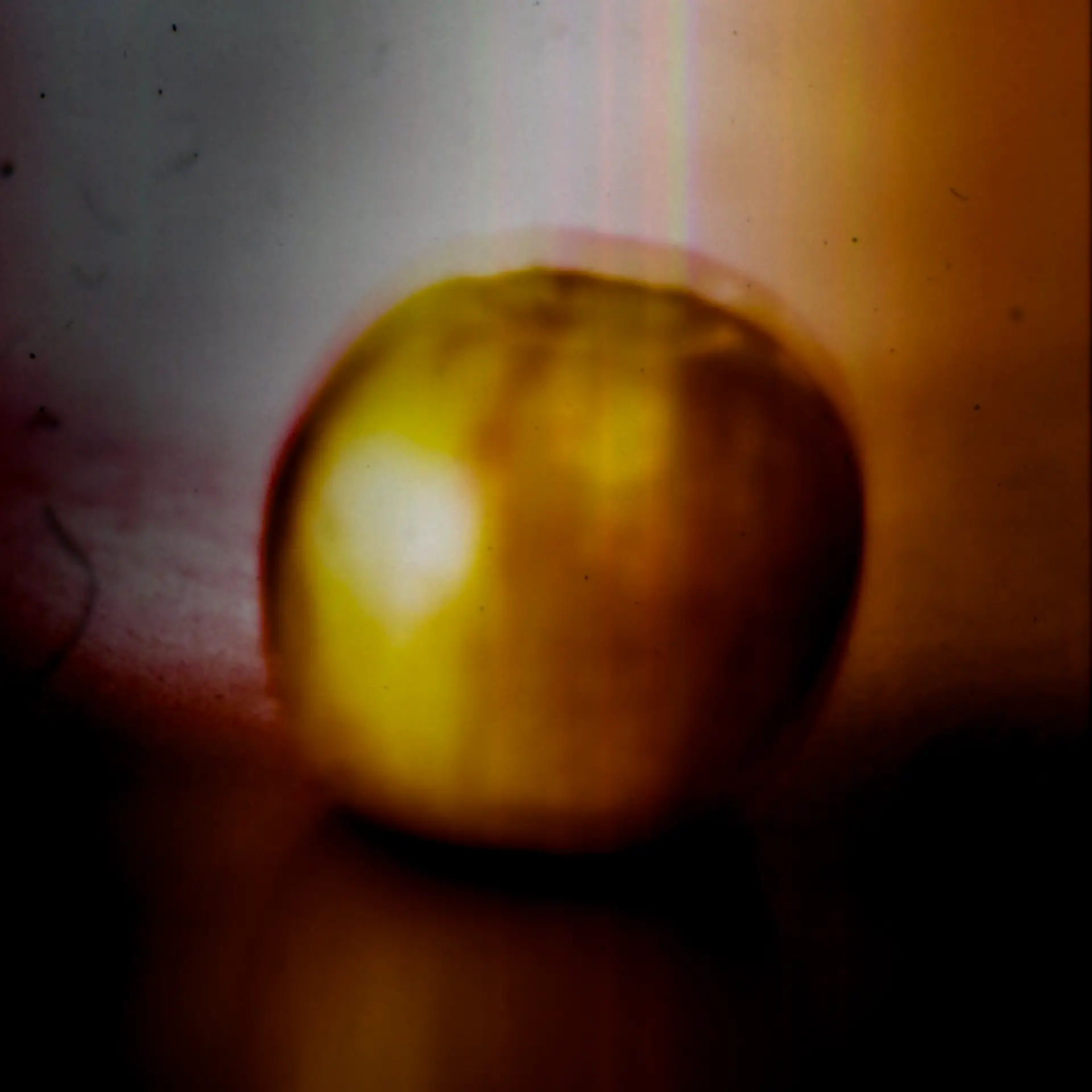
Recently I was given a whole bunch of expired film – as in 20+ years in an Aussie tin shed expired. I’ve been shooting this and scanning both tranny and neg – partly for economy as there’s no point in wasting money shop-scanning a roll that might hold nothing, but also because I wanted to just be part of the whole process.
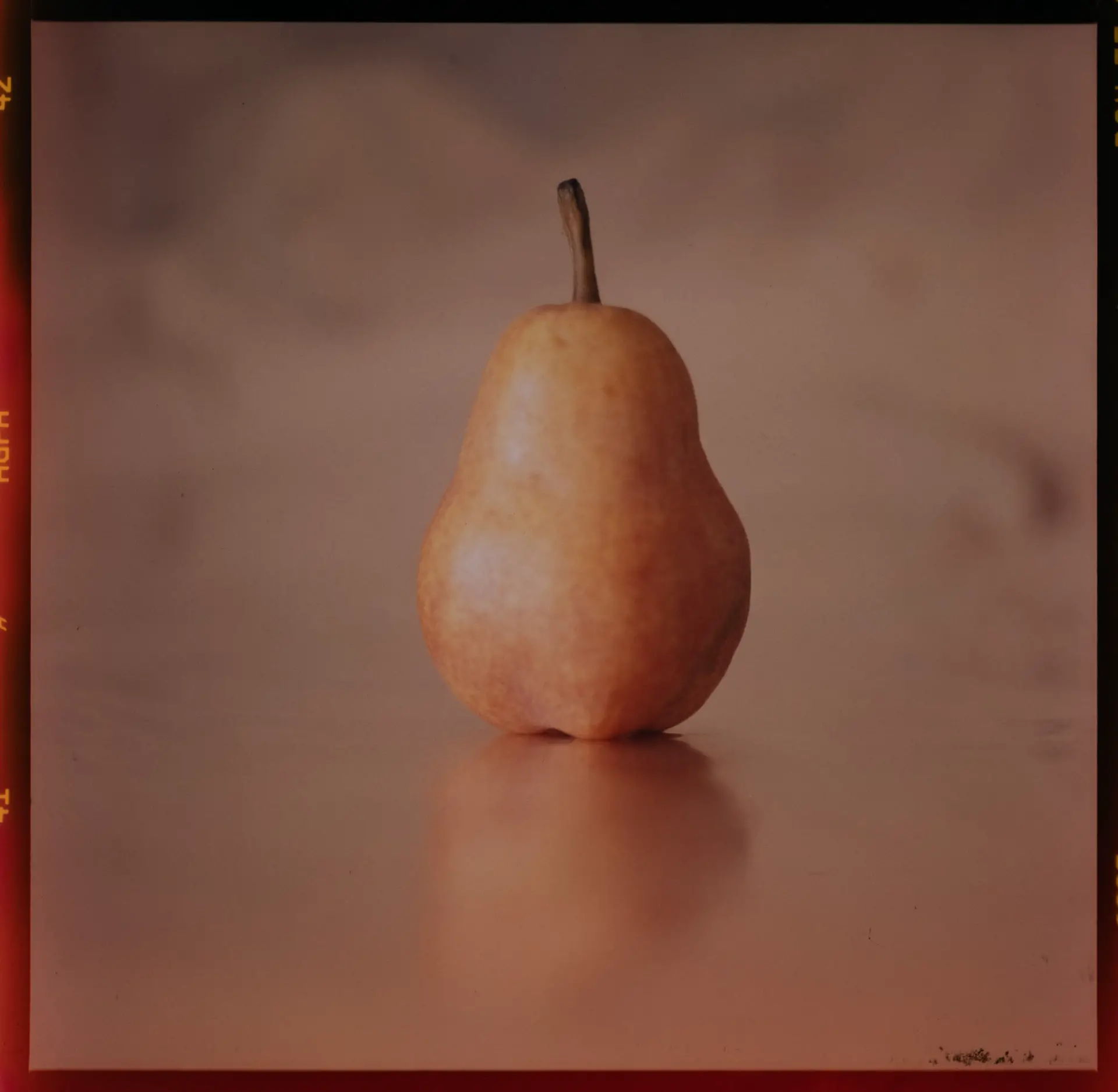
Look at this – this is how it looked on the lightbox. Is this red cast and low contrast a fault? Or is it character? I guess if you were trying for accuracy it’s a fault, but my hot tip is if you’re trying for accuracy, don’t shoot 20 year old tranny out of someone’s shed.
I was quite happy to mangle the tone curves in this to make the image below that I like:
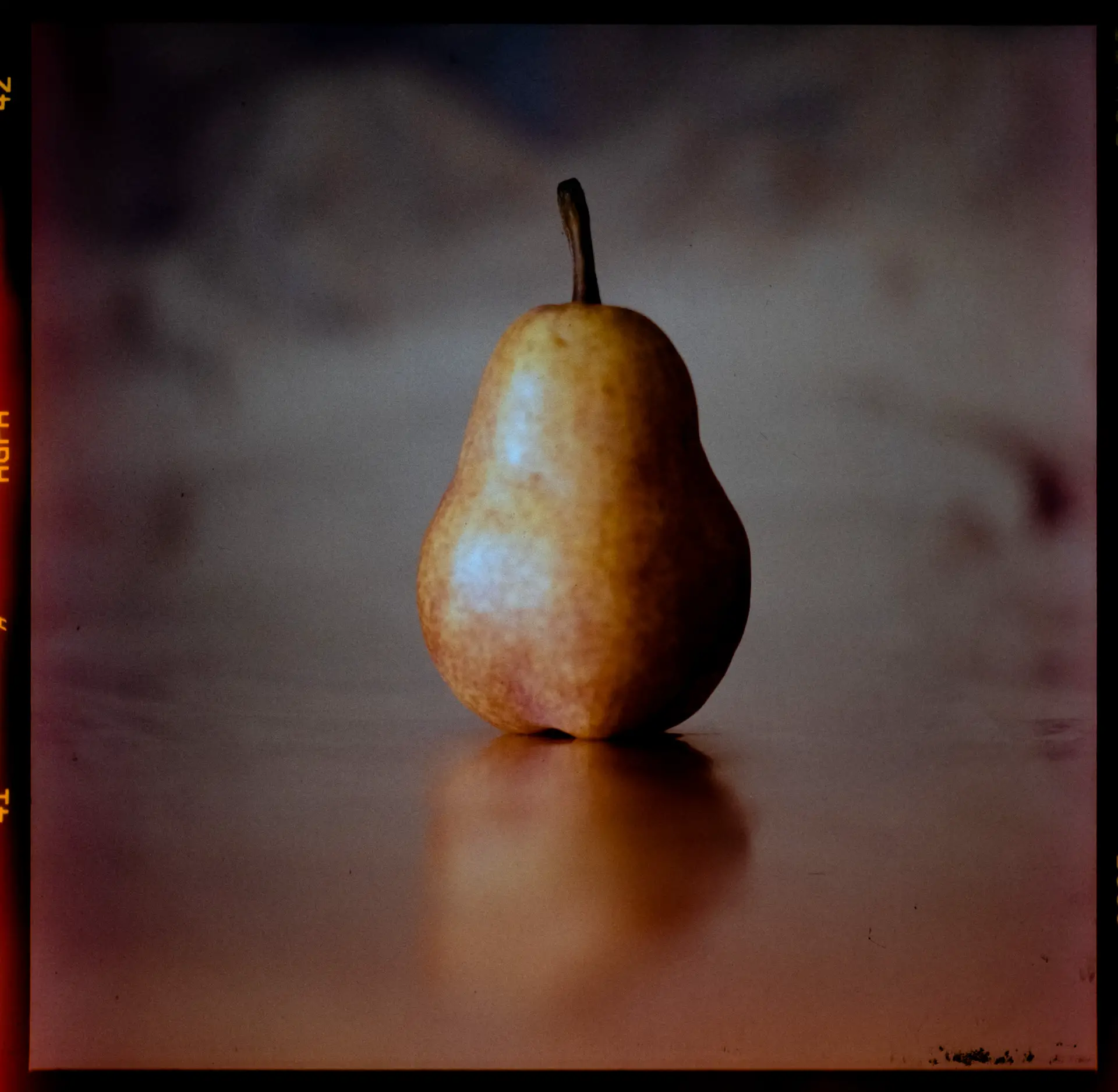
Let’s finish off with my most recent set – I’m really happy with it:
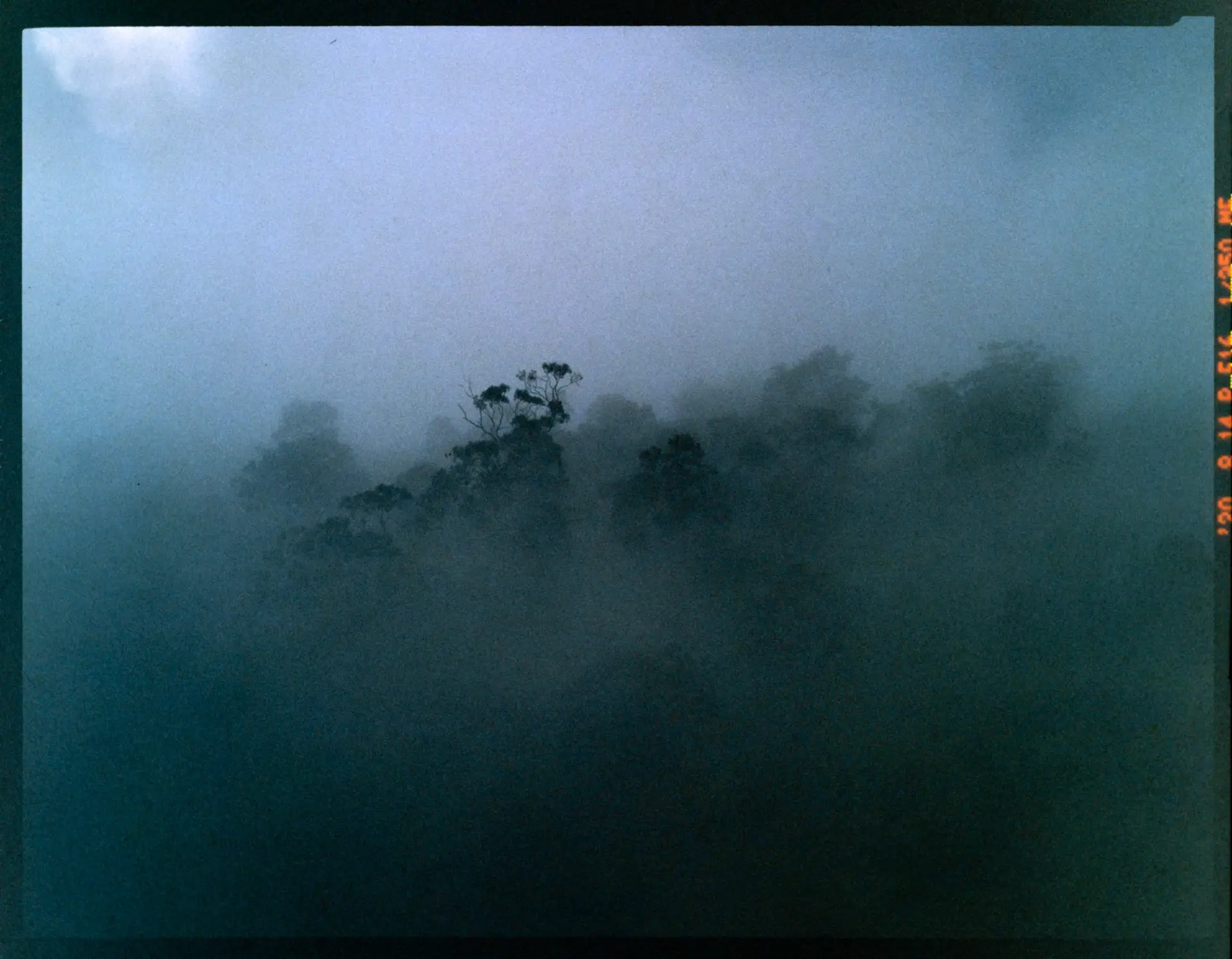
There’s a number of factors here that I believe make this work successful. Firstly, this is a hill near where I live – I go up here a lot; it’s my patch, and I feel like I can make images here. I also knew that on a day when the clouds come in really low it can look like this. I had seen this once before and I wanted to capture it. I had previsualised exactly the feel and mood I wanted. So I waited and waited and one day, when the weather came in, off I went. I had one roll of this 20+ yr old Fujichrome 400 in 120 but no idea whether anything would come out of it. I figured though, that if it did work it would capture very little dynamic range. The risk, of course, was that it might capture nothing. I’m learning, though, that you need to back your instincts on this stuff. If you put six bob each way on it you’re going to get nothing. I got lucky and got what I’d hoped for. The film responded like I wanted and I was able to make something out of it.
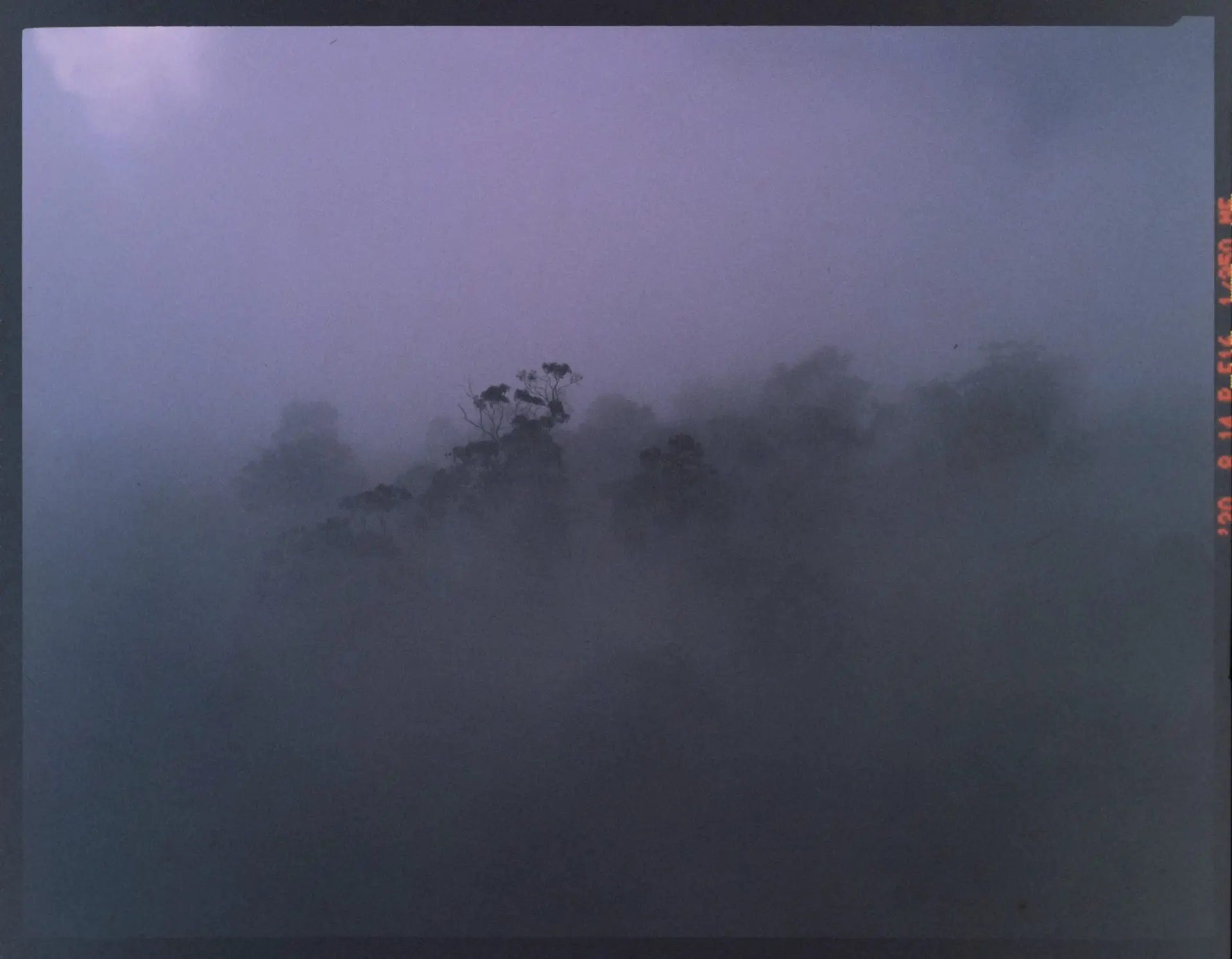
Above is what the tranny looked like – maybe a bit paler. All I did was change the colour balance to be what I wanted and fixed the curves so it had some blacks. If you ask me, this shot works because it has a tiny bit of detail to contrast with the mist. Without that it would just be smoosh.
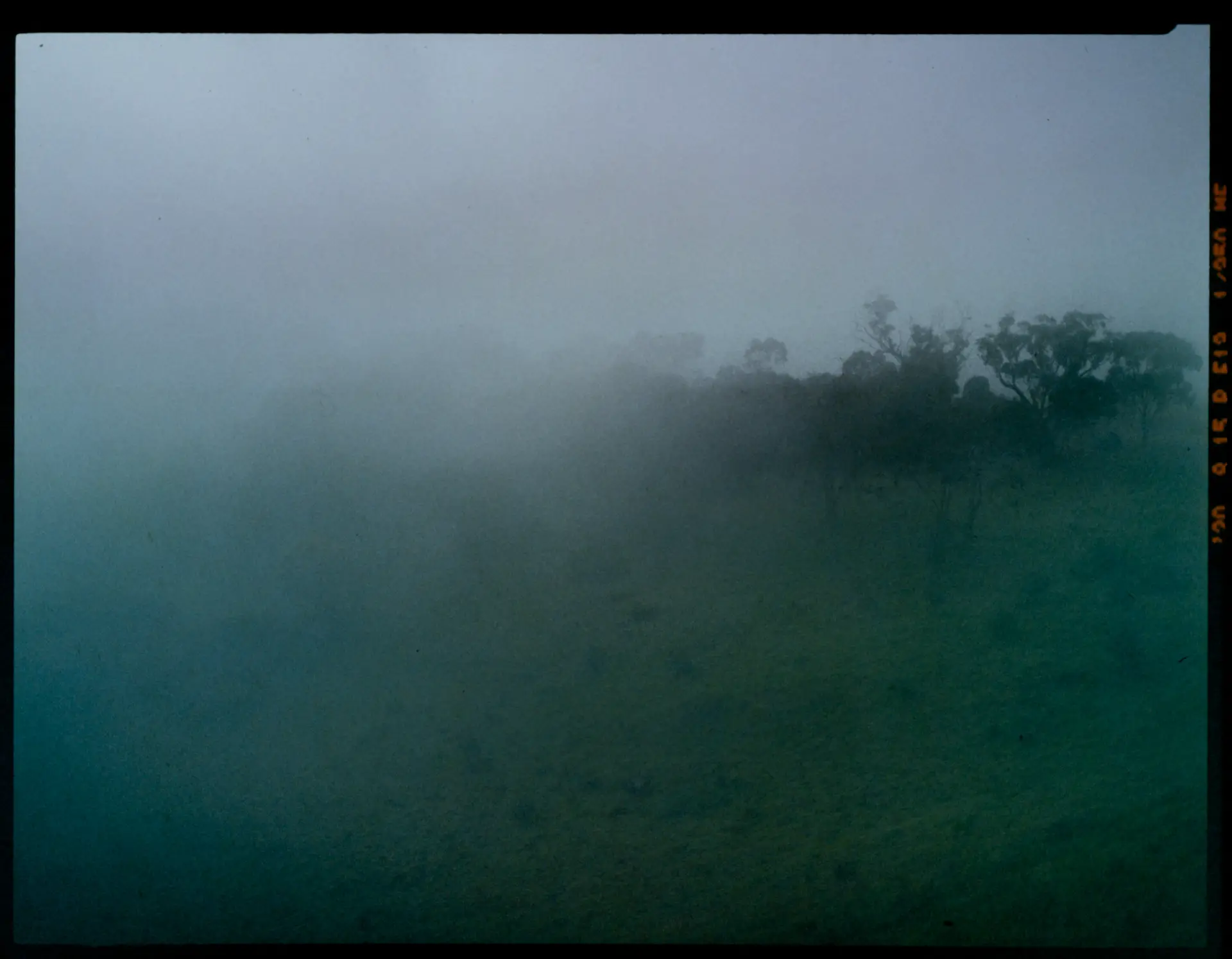
I’m also saying “this is a photograph” by leaving the frame in, and by virtue of its slight surrealism. I think we tend to forget what photos are because we see so many of them. We see a bunch of sharp, well exposed photographs with good dynamic range and sound colour balance and they’re not special any more. So in doing this kind of work I’m also asking you to have a look at this and a think about what you’re seeing here.
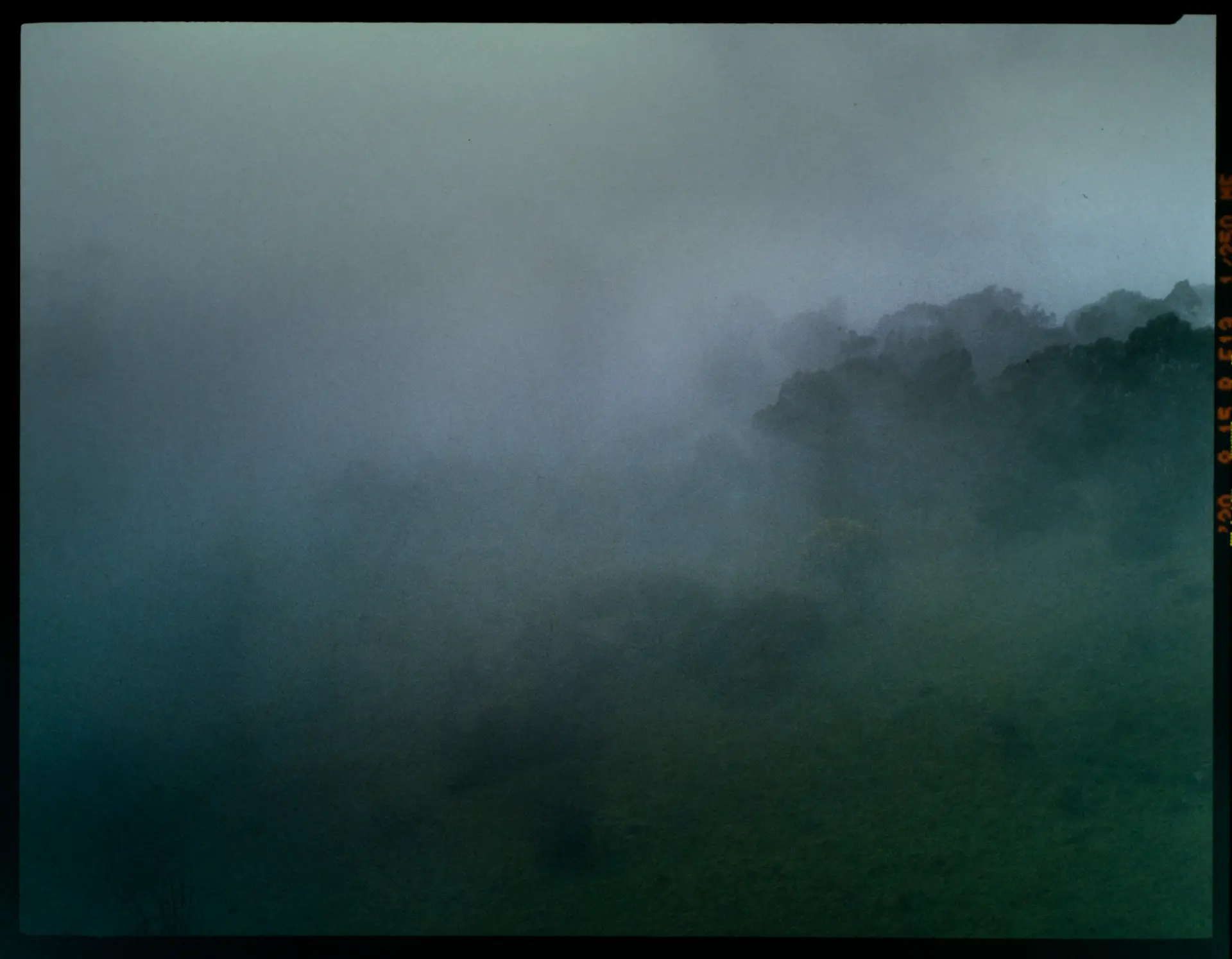
But most of all, I guess I’m trying to share a passion. I’m trying to learn to see, and trying to work out if I can share what I see with others. I’m sure I’ll keep changing my mind on what’s the best way to do this, but evolving the process is part of the fun. Thanks for reading and I hope you enjoyed it.
Share this post:








Comments
eric on Digitising Film – My Adventures So Far – By David Hume
Comment posted: 19/10/2020
Bravo David, one more time, and thank a lot one more time !
So great, very practical, very useful, and excellent. I do not scan myself because my lab does it crazy well, but with your article I should try ;-)
Thank you one more time for sharing and one more time the pictures are gorgeous.
Bravo.
Comment posted: 19/10/2020
Comment posted: 19/10/2020
Clive W on Digitising Film – My Adventures So Far – By David Hume
Comment posted: 20/10/2020
But without that, the internet would fit in a shoebox.
Another great read, David, one I’ll be revisiting. The Adams quote is pertinent; I’d say processing is fine, up to the point beyond which we see the processing before we see the picture. (Think of all those over-vivid digital sunsets and seascapes.) In fact, in your unprocessed pear picture, we see the dodgy film before we see the picture, so there are hazards at both ends of the spectrum.
Comment posted: 20/10/2020
Louis Sousa on Digitising Film – My Adventures So Far – By David Hume
Comment posted: 20/10/2020
Comment posted: 20/10/2020
WN on Digitising Film – My Adventures So Far – By David Hume
Comment posted: 20/10/2020
Comment posted: 20/10/2020
Neal Thorley on Digitising Film – My Adventures So Far – By David Hume
Comment posted: 21/10/2020
Great article! while I've not used DLSR scanning myself I have an Epson V700 that works well for my workflow, it's always great to hear from other Aussie film photographers! especially when they use the term "Munted" one of our most underappreciated words I'm sure.
I just gave you a follow on Instagram. I like your work, this kind of trip is something I've often thought about doing one day. I live in Tropical north Queensland.
Cheers
Neal.
Comment posted: 21/10/2020
Huss on Digitising Film – My Adventures So Far – By David Hume
Comment posted: 21/10/2020
There is no pure or correct image. Never has been, even in the pre-digital age. In the darkroom we selected colour filters, different paper stock, different paper contrasts, different developers, different films/lenses/exposures etc etc to create the images we wanted.
All that matters is if the final image is one that you want.
I find your articles inspiring, they always are about the image.
Comment posted: 21/10/2020
Alexander Seidler on Digitising Film – My Adventures So Far – By David Hume
Comment posted: 21/10/2020
I like you question - is this really the look of the film, or any combinated kind algorithm ?
But what is your answer. Did i miss it ?
Comment posted: 21/10/2020